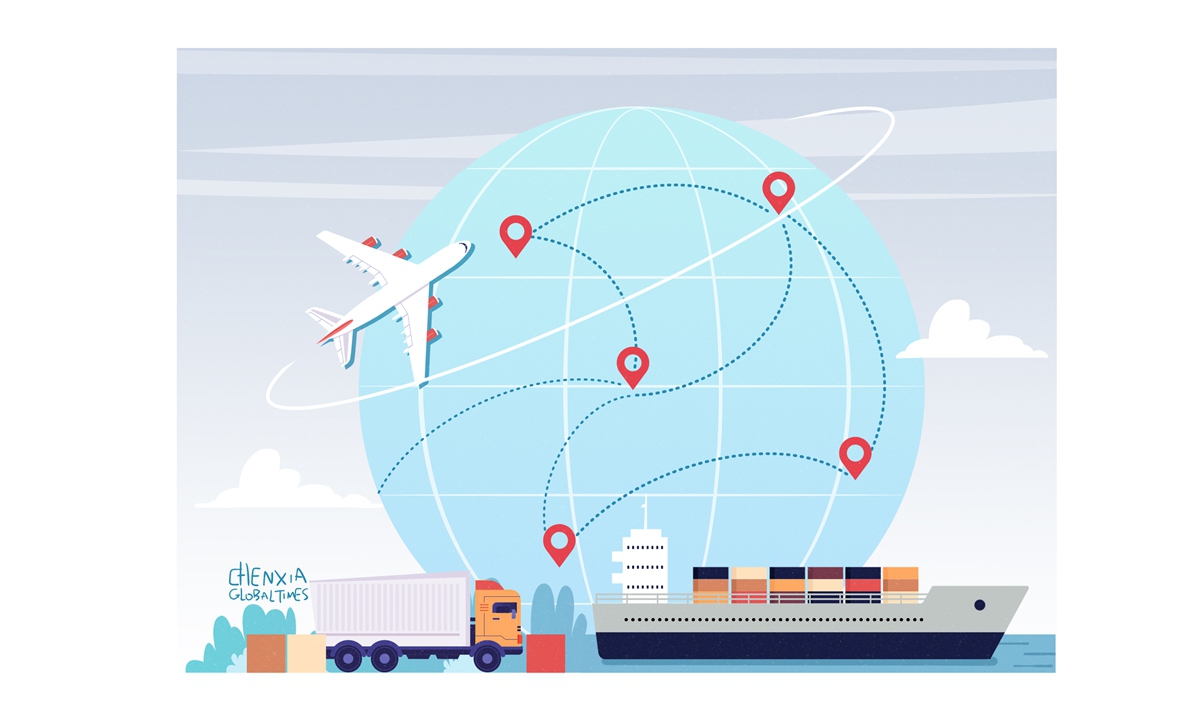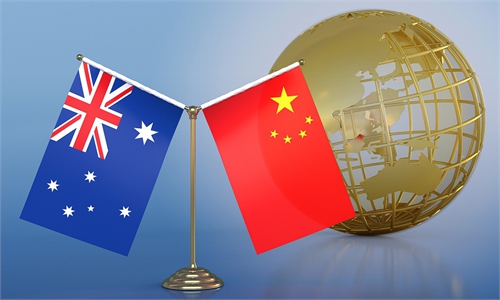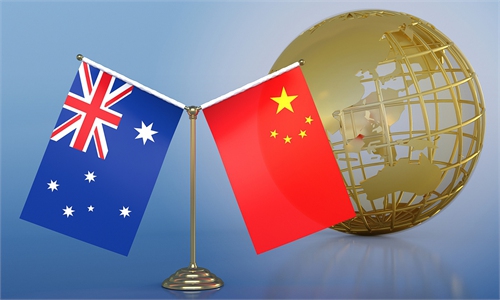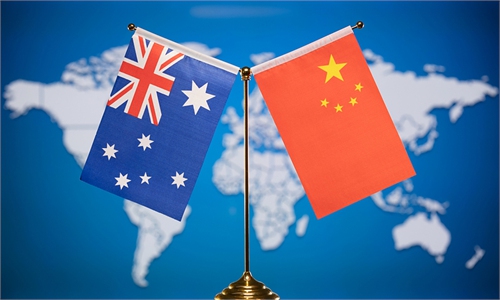
Illustration: Chen Xia/GT
Despite short-term fluctuation, a profound transformation within the Chinese economy has the potential to bring vast opportunities for enhanced economic and trade cooperation between China and Australia.The latest data from the General Administration of Customs showed that in the first 11 months of this year, trade volume between China and Australia declined 6.2 percent year-on-year. Their trade performance in 2023 saw bilateral trade jump 9.8 percent year-on-year to 1.61 trillion yuan ($220 billion), the highest level ever recorded.
The reduction in Australia's earnings from iron ore exports to China has emerged as a crucial factor. Despite a 4.3 percent increase in China's overall imports of iron ore and iron concentrates for the first 11 months of this year, the significant drop in iron ore prices and the robust growth of iron ore exports to China from Brazil have both contributed to the reduced earnings of Australia from iron ore exports to China.
Some Australian politicians also expressed some concerns. Australian Treasurer Jim Chalmers said on Sunday, ahead of a budget update this week, that "China's slowdown, weaker domestic growth and the need for additional spending in some areas are delivering headwinds for Australia's economy," Bloomberg reported.
Does this mean that the economic and trade relationship between China and Australia will decline from now on? The answer is clearly no. In fact, from a broader perspective, it is not difficult to see that the iron ore trade between China and Australia is closely related to the economic transformation that China is vigorously promoting.
According to the annual Central Economic Work Conference held in Beijing last week, efforts should be made to ramp up the green transition in all areas of economic and social development, with faster construction of new energy bases in sandy areas, rocky areas and deserts and the establishment of a group of zero-carbon parks, the Xinhua News Agency reported.
The Chinese economy has been undergoing a significant structural transformation, transitioning from a traditional growth model primarily reliant on resource consumption to a new one that prioritizes technological innovation, green development and high-quality growth. The emphasis on a green transition highlights a future focus on gradually reducing high-energy-consuming and high-emission industries, while accelerating the shift toward a green, low-carbon industrial structure. This transformation actually presents unprecedented opportunities for enhancing economic and trade relations between China and Australia.
Against such backdrop, the cooperation prospects between China and Australia are particularly broad. For instance, with the increasing popularity of electric vehicles and rapid breakthroughs in hydrogen energy technology, Australia, with its abundant natural resources and advanced technological capabilities, demonstrates significant advantages in this area. Meanwhile, China has a continuously rising demand for green energy and has established a complete industrial chain. By deepening cooperation, the two countries can work together to promote the vigorous development of these emerging industries and jointly lead the wave of global energy transformation.
Furthermore, the modernization of Chinese agriculture has created unprecedented market opportunities for Australia. As a key supplier of agricultural products to China, Australia is recognized internationally for its high standards in product quality, safety and traceability. With the growing demands of Chinese consumers for food safety and quality, the competitiveness of Australian agricultural products in the Chinese market is steadily increasing.
In summary, the potential for China to import goods from Australia remains largely untapped. As long as both sides can maintain an open and pragmatic approach to seize opportunities and strengthen cooperation, they will certainly be able to promote the continuous advancement of economic and trade relations between the two countries.



